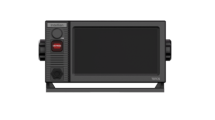
Inmarsat has announced the successful demonstration of its L-TAC on-the-move service in vehicles at speeds of up to 112kmph.
The newly-launched L-TAC service will provide approved government customers with a low-cost Tactical UHF Satellite (TACSAT) capability solution, which allows soldiers on foot or in vehicles to communicate on-the-move, using their existing UHF tactical radios.
Available for order from July and for connectivity in August 2013, Inmarsat’s latest offering is the next step in the expansion of mobile Beyond-Line-of-Sight (BLOS) communications provided by the innovative technology behind its L-band satellites.
The L-band service uses smaller antennae than the UHF equivalent, making it practical to offer compact, inexpensive omni-directional antennas for mounted and dismounted use.
Andy Start, President of Inmarsat Global Government, comments: “We have successfully demonstrated robust L-TAC communications from vehicles at speeds up to 112 kmph. This will have huge military utility; for example, coordinating logistic convoys moving over long distances or for command and control of widely dispersed vehicle patrols manoeuvring in difficult terrain.
“Our small, lightweight man-pack version offers the same comms on the move capability to dismounted soldiers. This is a real game-changing capability. Convoys and patrols won’t have to pause while using their TACSAT, and that means improved tempo and less time spent vulnerable to attack. We have received very positive feedback during the trial stage and governments around the world have already expressed keen interest in the service. L-TAC will provide a new, innovative and affordable means to gain maximum value from the investment they have made in their existing tactical radios.”
TACSAT is in demand by government users as it easily and reliably extends tactical Push-to-Talk radio networks to wide area BLOS operations, but existing networks are oversubscribed. Inmarsat’s L-TAC service, announced earlier this year, will complement existing capacity with a single-hop, low-latency voice and data service, providing additional capacity when UHF channels are unavailable. The powerful Inmarsat-4 constellation of satellites provides this capability across the globe. To access the service, users require only a small, light-weight adaptor to convert their existing radio to L band and an L band replacement for their existing UHF antenna.
Inmarsat has partnered with Spectra, a specialist telecommunication services organisation, to develop the Slingshot system, which comprises a power supply, frequency convertor and antenna. SlingShot works with existing tactical military radios and requires minimal additional training to provide BLOS communications without the need for supplementary infrastructure or additional cumbersome gear. Slingshot supports the majority of military TACSAT radios and has already been tested with the most widely used types. Combined with Inmarsat’s L-TAC leased service, it is fully flexible and designed to meet security and reliability requirements cost-effectively. Users will be able to lease the service for periods as short as one month in either narrow spot beams, larger regional beams or beams customised to meet their area of operations.
Simon Davies, Managing Director of Spectra Group, adds: “The ability to use existing radios spread over long distances in the field to increase operational capabilities without straining government budgets is critical. As governments around the world review military budgets, offering a device which meets military standards, without large capital expenditure is a highly compelling offer.”












Add Comment